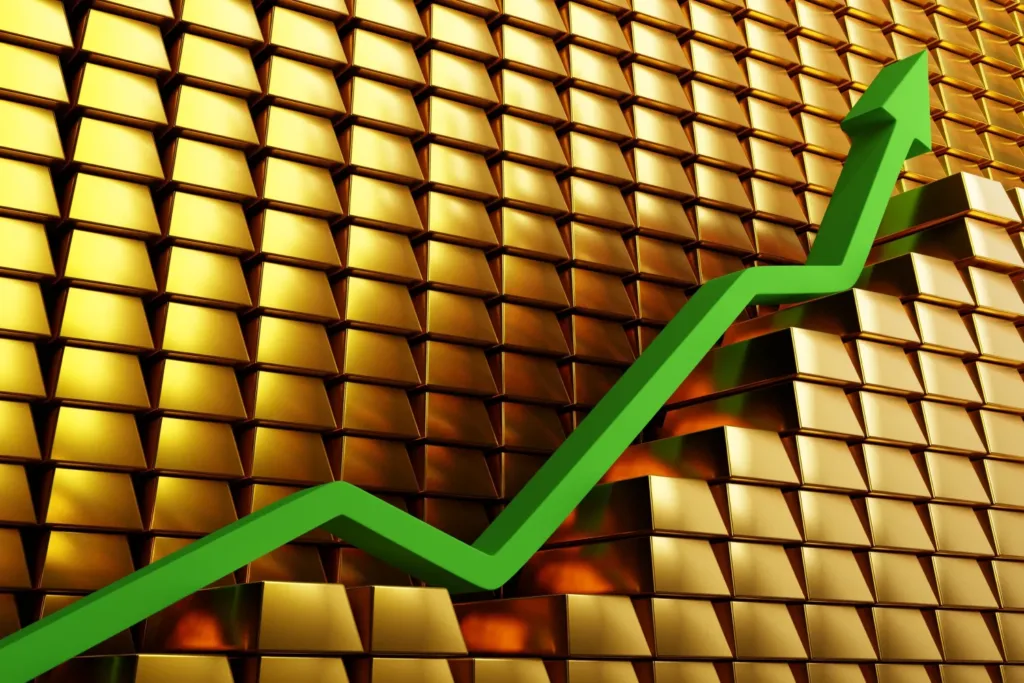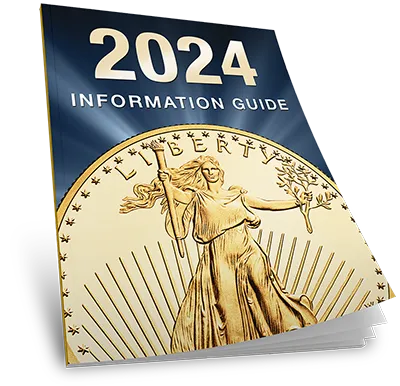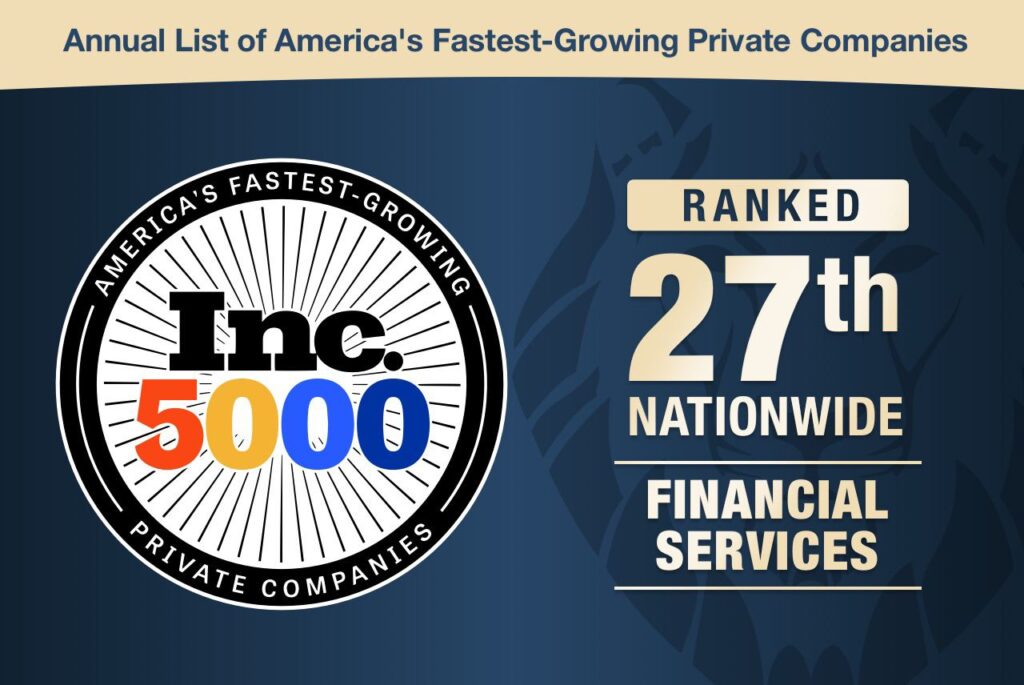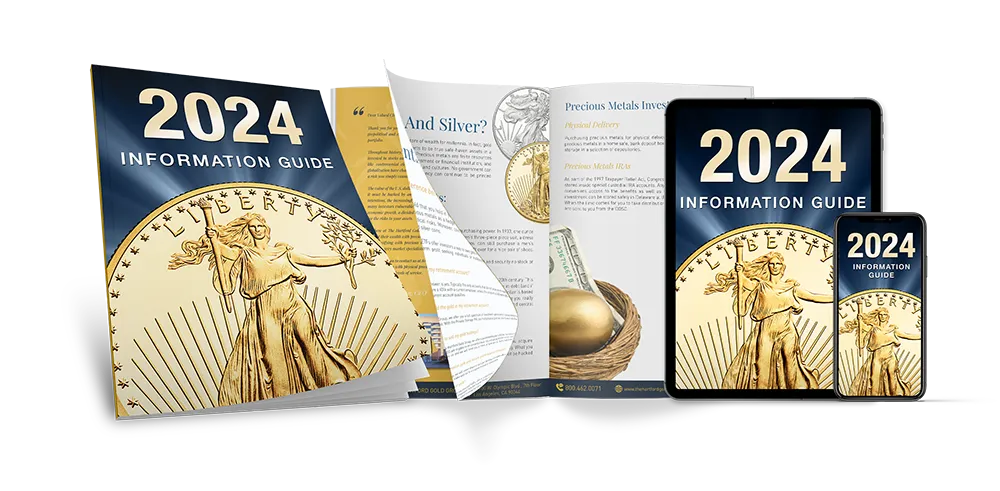Gold is a treasure, something people worldwide have valued for centuries. It’s not just beautiful — it’s also been used as money and is an essential player in today’s financial markets. This article is about gold’s price. Specifically, the highest it’s ever been.
We’ll look at what gold is, what drives its price up or down, and the record highs it’s hit over the years. We’ll also dive into why gold prices are climbing now and ponder whether they might reach new peaks soon.
And for anyone looking to get into gold, we’ll share some pointers on where to start buying. So, if you’re curious about gold’s glittering highs or thinking about purchasing, you’re in the right place.
What Is Gold?
Gold is a precious metal that has captivated humanity for thousands of years. It isn’t just a symbol of wealth and power but a significant player in the global economy. This shiny, yellow metal is measured in troy ounces, a unit of measure for precious metals that dates back to the Roman monetary system.
Gold’s allure comes from its rarity, beauty, and the fact that it doesn’t tarnish, making it ideal for jewelry and coinage. Beyond its physical attributes, gold is highly valued in financial markets as a hedge against inflation and economic uncertainty. Central banks, including the Federal Reserve, known as the Fed, hold significant gold reserves as part of their monetary policy strategies to stabilize and secure their currencies.
In periods of high inflation or geopolitical tensions, such as during the pandemic or conflicts like those in Ukraine and Russia, investors often turn to gold as a safe-haven asset. This surge in demand can drive up the price of gold, reflecting broader economic trends and investor sentiment.
Gold’s price is also influenced by the U.S. dollar’s strength, interest rates, and supply chain dynamics, among other factors. With its deep roots in history and modern role in the economy, gold remains an important asset for investors, central banks, and consumers worldwide.
What Affects the Gold Price?
The price of gold is shaped by various complex factors, reflecting its timeless pull and its role in the modern global economy.
Key drivers include:
- Interest Rates: When the Fed or other central banks adjust interest rates, it impacts gold prices. Lower interest rates reduce the opportunity cost of holding non-yielding assets like gold, making it more attractive to investors.
- Inflation: Gold is traditionally seen as a hedge against inflation. As the consumer price index (CPI) rises, indicating higher inflation, the value of gold often increases as investors seek to protect their purchasing power.
- Supply and Demand: The supply and demand fundamentals significantly influence gold prices. Economic disruptions, such as those caused by the pandemic, can affect gold mining and supply chains. At the same time, demand can surge in geopolitical tension or economic uncertainty, as seen with conflicts in Ukraine and Russia.
- U.S. Dollar Strength: Gold is often inversely related to the strength of the U.S. dollar. A weaker dollar makes gold cheaper for holders of other currencies, increasing demand and prices.
- Central Bank Policies: The world’s central banks, including the Fed, hold large reserves of gold. Their buying or selling decisions can significantly impact global gold prices.
- Economic Indicators: Broader economic indicators, such as unemployment rates, GDP growth, and consumer demand, influence investor sentiment and, consequently, gold prices. High inflation or economic instability can drive investors towards gold as a haven.
- Market Speculation: Traders and investors speculating on the future direction of gold prices in financial markets through instruments like ETFs (Exchange Traded Funds) and futures contracts can also cause price fluctuations.
- Geopolitical Tensions: Gold prices often rise amid geopolitical uncertainty as investors seek safe assets. Tensions in areas like the Middle East or between major powers can prompt investors to buy gold.
These factors, along with others such as labor costs in mining and energy prices affecting production costs, collectively determine the price of gold. As a precious metal with both tangible value and symbolic significance, gold remains a central focus of financial markets and a key component of many investment strategies.
What Is the Highest Gold Price in History?
The highest spot price of gold in history was recorded on April 3rd, 2024, when it peaked at approximately $2,292.31 USD per ounce in the international markets.
The previous record in December was influenced by a combination of factors deeply rooted in the economic and geopolitical landscape of the time.
The pandemic played a significant role, as global uncertainties and economic disruptions led investors to seek the safety of gold, a well-regarded safe-haven asset class. The Fed and central banks worldwide responded to the economic fallout from COVID-19 with unprecedented monetary easing, including interest rate cuts and massive liquidity injections, which weakened the U.S. dollar and fueled inflation fears.
These measures, alongside ongoing tensions between major powers, such as the U.S. and China, and the conflict in Ukraine and Israel, heightened the appeal of gold. Moreover, the economic indicators, including rising consumer price index (CPI) numbers and concerns over potential high inflation, drove investors towards gold as a store of value to protect against diminishing purchasing power.
The record high reflected gold’s enduring status as a hedge against uncertainty and inflation, underscoring its significance in diversified investment portfolios. The intricate dance between interest rates, geopolitical tensions, supply chain disruptions, and central bank policies continually shapes gold’s valuation, making its market dynamics a focal point for economists, investors, and analysts worldwide.
What Are the Prices of Gold Historically?
Historically, gold prices have seen significant fluctuations, reflecting a variety of economic, political, and social factors.
Here are five notable periods in the history of gold prices:
- Bretton Woods Agreement (1944): Post-World War II, the Bretton Woods Agreement established the U.S. dollar as the world’s primary reserve currency, fixed to gold at $35 an ounce. This system established stability but ended in 1971 when the U.S. abandoned the gold standard due to mounting inflation and gold demand, leading to a free-floating gold price.
- 1970s Oil Crisis: The 1970s witnessed a remarkable surge in gold prices, from $35 an ounce in the early part of the decade to over $450 by the end of the 1970’s. This period was marked by high inflation, driven by rising oil prices due to geopolitical tensions in the Middle East, and a loss of confidence in fiat currencies, pushing investors towards gold.
- Financial Crisis of 2008: The 2008 financial crisis, triggered by the collapse of Lehman Brothers and a global credit crunch, saw investors flocking to gold as a safe haven. From around $730 in early 2008, gold prices climbed to around $1,200 by 2009 as central banks, including the Federal Reserve, slashed interest rates and implemented quantitative easing to combat the recession.
- European Debt Crisis (2011): Gold reached new highs in 2011, peaking at around $1,900 an ounce, amid the European debt crisis and fears of a U.S. default. Investors sought gold as a hedge against the uncertainty of the eurozone’s stability and the potential for another global financial meltdown.
- COVID-19 Pandemic (2020): The onset of the COVID-19 pandemic caused a dramatic rise in gold prices, reaching a record high of approximately $2,070 in August 2020. The combination of low interest rates, unprecedented monetary stimulus from central banks like the Fed, and heightened economic uncertainty drove investors toward the precious metal.
Where Can You Buy Gold?
When considering the purchase of gold, various options cater to different preferences, whether you’re interested in physical gold or investment products that represent gold ownership.
Local shops cater to numismatists and sell investment-grade gold bars and coins. These establishments offer the advantage of personal interaction, allowing buyers to physically inspect the gold before purchasing.
Online precious metals websites like American Hartford Gold provide a comprehensive selection of gold products, from gold bars to rare gold coins and even gold IRAs. These platforms often offer competitive pricing, secure storage options, and sometimes buy-back programs, making them a convenient choice for new and experienced investors.
While not the most cost-effective way to purchase gold due to markups and design costs, you can buy gold jewelry at a jewelry store. It allows for both adornment and investment. Purchasing gold from a jewelry store lets you focus on pieces with a high gold content (measured in karats).
Central banks or national mints offer gold coins to the public in several countries, including America, Canada, Australia, and the United Kingdom. These institutions guarantee the purity and weight of the gold, establishing themselves as trusted sources for collectors and investors worldwide.
The Bottom Line
Gold’s price history is marked by peaks and valleys, influenced by economic, geopolitical, and monetary factors. The highest recorded price of gold, peaking at approximately $2,292.31 USD on April 3rd, 2024, underscores its enduring value as a safe-haven asset, particularly during periods of uncertainty and inflation.
Gold’s allure remains prominent as we live through a landscape shaped by pandemics, geopolitical tensions, and fluctuating central bank policies. Whether you’re looking to hedge against inflation or a collector drawn to its timeless luster, understanding gold prices and stock market dynamics is essential.
For those considering entering the gold market, American Hartford Gold offers a trusted avenue to explore various gold asset options. Reach out to American Hartford Gold today to secure your financial future with the timeless value of gold.
Sources:
Bretton Woods Agreement and the Institutions It Created Explained | Investopedia
Oil Shock of 1973–74 | Federal Reserve History
Gold When the Economy Collapses: Gold’s Price During Crisis | Focus on the User
European debt crisis drives gold rush – Nov. 17, 2011 | CNN
Gold shines bright throughout the COVID-19 crisis | World Bank






